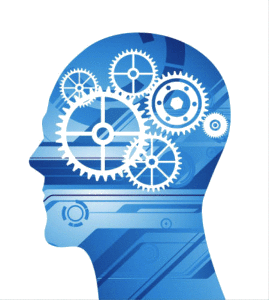Intelligence has been a remarkably difficult concept to pin
down in any kind of robust and reliable way.
It often falls into that elusive category of ‘things we know exactly
what they are until someone asks us for a definition’. Because of this there
are many competing conceptions. The definition below is a synthesis of many of these
different ideas.
Intelligence is our set of general problem solving skills.
It includes cognitive abilities such as reasoning, identifying patterns and
relationships, judgement, calculation, evaluation, and an ability to acquire
new knowledge and skills.
An important aspect of most definitions seems to be that intelligence
is not something related to our existing knowledge or particular skills we have
developed but rather a general problem solving trait for novel situations. Perhaps
this idea is best captured in the phrase; “Intelligence is what you do when you
don’t know what to do”
Part of the problem in attempting to find a consensus on the
definition of intelligence is there is no universally accepted theory of
intelligence.
Single or Multiple Intelligences?
One of the key questions in the search for a theory of
intelligence is; ‘Do we possess a single attribute that could be defined as our
intelligence, or are there in fact many entirely different types of
intelligence?
If our intelligence can be expressed as a single attribute,
can that attribute be divided into different aspects of intelligence? If so
how are these different aspects related, and do they overlap? If, alternatively
there are many different intelligences, how do we account for the high degree of
correlation we find on many test scores that measure supposedly different
cognitive skills?
Theories of Intelligence
There have been many different theories of intelligence put
forward over the last century, but three in particular have been widely
accepted within society and academic communities.
General Intelligence
First proposed by Charles Spearman in 1904, was the theory
of a General Intelligence factor (g). Accepting that there are different types
of intelligence, Dr Spearman suggested they are all correlated, so if you score
well on a test of one, you will likely score well on all the others too. This
was because these different types were all related to the single General
Intelligence factor (g).
This model as subsequently developed by Raymond Cattell who
split the ‘g’ factor into two components Fluid Intelligence (Gf) and
Crystalised Intelligence (Gc).
Fluid
intelligence is identified as the ability to solve problems in novel
situations, independent of any acquired knowledge. Key Gf skills are logical
analysis, pattern and relationship recognition and adaptability.
Crystallized intelligence, on the other hand is the ability
to use skills, knowledge, and experience. Key Gc skills are accessing memories,
a wide general knowledge base and articulate vocabulary.
Theory of Multiple intelligences
Howard Gardner a Harvard Psychologist, proposed this
alternative model in his 1983 book Frames of Mind: The Theory of Multiple
Intelligences.

Rather than a single general ‘intelligence’ there are eight
distinct types of intelligence with no necessary correlation between them.
This
means just because an individual might perform well on a one test; say analytical
intelligence for example, they could also perform badly on another, such as
displaying poor emotional intelligence.
The eight types of intelligence under Gardner’s theory are: Spatial,
Linguistic, Logical-mathematical, bodily-kinesthetic, musical, interpersonal,
intrapersonal and naturalistic.
Since the original publication three further types have been
suggested; existential, spiritual and moral intelligence.
Triarchic Theory of Intelligence
Developed by Robert Sternberg in 1985, the Triarchic Theory
of Intelligence takes a much broader view of intelligence. The starting point
is that intelligence is defined as how well an individual deals with the environmental
changes they experience throughout their lifespan.
Under the Triarchic model, intelligence are broken down into
three subsets; analytical , creative and practical. These components are also
known as; componential, experiential, and contextual
Analytical
intelligence, refers to problem-solving abilities, Creative intelligence reflects the
ability to deal with new situations using past experiences and current skills,
and Practical intelligence is the
ability to adapt to a changing environment.
Conclusions
At present these and other competing theories of
intelligence have yet to be reconciled into a single accepted theory. There is promise
from some Neurobiological approaches such as P-Fit (Parieto-Frontal Integration
Theory) proposed by Haier and Jung, that these different ideas may ultimately
be shown to be complimentary descriptions.
Haier and Jung’s analysis of imaging studies attempting to
locate brain regions involved in intelligence showed results are very similar
regardless of the definition of intelligence used.
Even without a fully agreed theory, there are several features
that all seem to share. These features equally cut to the heart of our
intuitive idea of intelligence. Intelligence is a foundation for a wide variety
of cognitive functions, skills and attributes. It is also the essence of
problem solving, particularly where no prior knowledge or experience of the
problem is available.

No comments:
Post a Comment